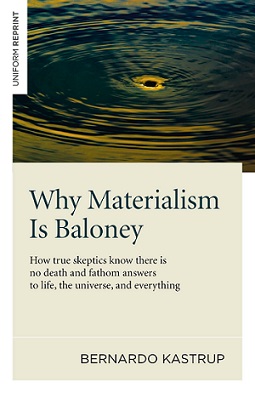|
home | what's new | other sites | contact | about |
|||
|
Word Gems exploring self-realization, sacred personhood, and full humanity
Dr. Elaine Pagels and the biblical
return to the main-page article on "Satan"
Preview and Summary: The original concept of the satan began as one thing and evolved into another. "Satan" originally referred to one of God's loyal angels, which, like the Angel of Death at Passover, according to the text, might be sent to do God's will in the world. However, over time, more and more vindictive-baggage was added to the "satan" concept until finally it became a symbol of cosmic opposition to God. As the term developed in scripture, in its final form, we discover true-believers literally "demonizing" a political adversary by calling him the satan.
Dr. Elaine Pagels of Harvard, one of my favorite scholars, does a thorough job in her research. I would recommend all of her books. Though a gentle and refined spirit, she has many enemies in fundamentalism's camp as she overthrows their myths.
How the Hebrew word 'satan' developed in the Old Testament Some within Israeli society, Elaine points out, blamed its misfortunes on Israel’s own disobedience to God. Among this group we find the prophets Amos, Isaiah, and Jeremiah. However, others laid blame upon Israel’s enemies, depicted as “the monsters of Canaanite mythology […] Jon Levenson observes, ‘the enemies cease to be merely earthly powers […] and become, instead, or in addition, cosmic forces of the utmost malignancy.” At times, this mythological imagery might be employed against fellow Israelites, but, most often, the chosen images of reproach were “not the animalistic or monstrous ones they regularly applied to their foreign enemies [but] they identified their Jewish enemies with an exalted, if treacherous, member of the divine court whom they called the satan." “The satan is not an animal or monster but one of God’s angels, a being of superior intelligence and status; apparently, the Israelites saw their intimate enemies not as beasts and monsters but as superhuman beings whose insider status could make them more dangerous than the alien enemy. "In the Hebrew Bible, as in mainstream Judaism to this day, satan never appears as Western Christendom has come to know him, as the leader of an 'evil empire,' an army of hostile spirits who make war on God and humankind alike.” “In the collection of documents … known to Christians as the Old Testament, the word [satan] never appears … as the name of the adversary … rather, when the satan appears in the Old Testament, he is a member of the heavenly court, albeit with unusual tasks.” (Neil Forsyth, The Old Enemy: Satan and the Combat Myth)
"the satan" first appears in the Bible as one of God's loyal servants. “As he first appears in the Hebrew Bible, satan is not necessarily evil, much less opposed to God. On the contrary, he appears in the book of Numbers and in Job as one of God’s obedient servants – a messenger, or angel… In Hebrew, the angels were often called ‘sons of God,’ and were envisioned as the hierarchical ranks of a great army, or the staff of a royal court. “In biblical sources the Hebrew term the satan describes an adversarial role. It is not the name of a particular character. Although Hebrew storytellers as early as the sixth century BCE occasionally introduced a supernatural character whom they called the satan, what they meant was any one of the angels sent by God for the specific purpose of blocking or obstructing human activity. The root [Hebrew, stn] means ‘one who opposes, obstructs, or acts as adversary.’ (The Greek term diabolos, later translated devil, literally means ‘one who throws something across one’s path.’) “The satan [is one] who by God’s own order or permission, blocks or opposes human plans and desires. But this messenger is not necessarily malevolent. God sends him, like the angel of death, to perform a specific task, although one that human beings may not appreciate; as … Neil Forsyth says of the satan, ‘If the path is bad, an obstruction is good.’ “The story of Balaam in the biblical book of Numbers tells of a man who decided to go where God had ordered him not to go. Balaam saddled his donkey and set off, ‘but God’s anger was kindled because he went; and the angel of the Lord took his stand in the road as his [Hebrew, satan]’ – that is, as his adversary, or his obstructor… [The satan speaks to Balaam:] “Behold, I came here to oppose you, because your way is evil in my eyes … if [the donkey] had not turned aside from me, I surely would have killed you right then. “The book of Job too describes the satan as a supernatural messenger, a member of God’s royal court… the satan terrifies and harms a person but, like the angel of death, remains an angel, a member of the heavenly court, God’s obedient servant." Elaine offers other Old Testament examples of this view of the satan. However, a time would come when this term would acquire a new meaning. After the Babylonian exile, the returning Jews were eager to rebuild the Temple; however, these were not warmly received by those who had been left behind. A kind of civil war ensued, a struggle for leadership in what would be the new Jerusalem. It was at this time (circa 600 BCE) that satan takes on new meaning in the literature. “As the biblical scholar Paul Hanson notes, the line that had once divided the Israelites from their enemies had separated them from foreigners. Now the line separated two groups within Israel … [the returning exiles] regarded these [indigenous] brethren as essentially no different from Canaanites.’ “The prophet Zechariah sides with the returning exiles in this heated conflict and recounts a vision in which the satan speaks for the [local Jewish] inhabitants who accuse the returning high priest of being a worthless candidate…
“Here the satan speaks for a disaffected – and unsuccessful – party against another party of fellow Israelites. In Zechariah’s account of factions within Israel, the satan takes on a sinister quality … and his role begins to change from that of God’s agent to that of his opponent.” I will abbreviate Elaine’s discussion, but I would encourage you to read her work. Four hundred years later, about 150 BCE, during the time of the Maccabean revolt, the inter-testamental literature employs the use of satan to speak of the foreign enemies of Israel. “No longer one of God’s faithful servants, he begins to become what he is for Mark and for later Christianity – God’s antagonist, his enemy, even his rival.” Essentially, "the satan" became a political term, a pejorative to be hurled at one's hated opposition. It was a way of saying, "You're not just wrong, you're evil, and against the will of God!"
Final thoughts on the research of Dr. Pagels The original concept of the satan began as one thing and evolved into another. "Satan" originally referred to one of God's loyal angels, which, like the Angel of Death at Passover, might be sent to do God's will in the world. However, over time, more and more vindictive-baggage was added to the "satan"-concept until finally it became a symbol of cosmic opposition to God. As the term developed in scripture, as it neared its final form, we discover true-believers literally "demonizing" a political adversary by calling him the satan.
|
|||
|
|



